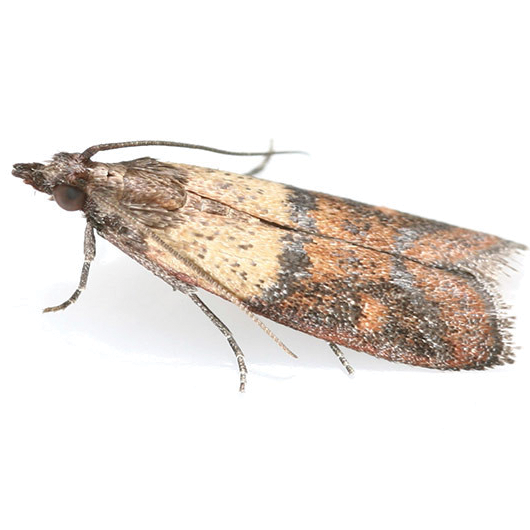Ephestia Kuehniella – Biology
Adult mating takes place immediately after the adults emerge. Adults females lay eggs in groups and singly, up to 350 eggs are laid and these may be stuck to various foods by a sticky secretion. Adult stage completed with 10-14 days. The eggs hatch in 4-28 days to give white or pinkish larvae and spin silken tubes in which they live. After 3-5 moults the larvae are full grown and 15-19mm long. They then wander away from food and pupate for 7-16 days in the dark corners of buildings or machinery. In colder climates these moths overwinter as larvae but, in contrast to other species, usually remain in the foodstuff.
Ephestia Kuehniella – Nature of Damage
The newly emerged larvae move to the stored products. Young larvae feed voraciously and make web or silk. Mill moth larvae prefer wheat flour, but will also feed on all sorts of grains, cereals, seeds, dried fruits, nuts and almonds. Larvae produce unpleasant smell in the infected product and leave faeces in the product as well. Larval webbing can cause serious blockages in provender mills. The larvae eat holes in sifting silks and may also reach the mill’s finished products.


